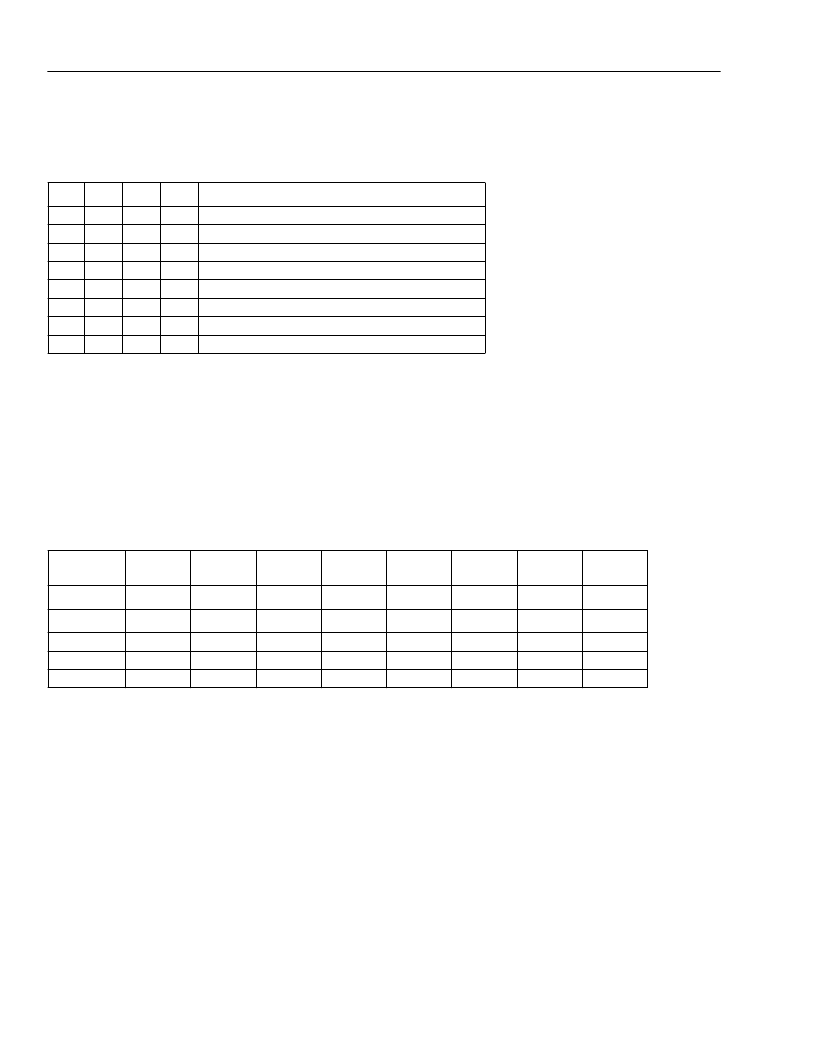- 您現在的位置:買賣IC網 > PDF目錄383876 > T7633 (Lineage Power) Dual T1/E1 3.3 V Short-Haul Terminator(雙T1/E1 3.3V短通信距離終端器) PDF資料下載
參數資料
| 型號: | T7633 |
| 廠商: | Lineage Power |
| 英文描述: | Dual T1/E1 3.3 V Short-Haul Terminator(雙T1/E1 3.3V短通信距離終端器) |
| 中文描述: | 雙T1/E1的3.3伏短途終結者(雙T1/E1的3.3短通信距離終端器) |
| 文件頁數: | 70/248頁 |
| 文件大小: | 1459K |
| 代理商: | T7633 |
第1頁第2頁第3頁第4頁第5頁第6頁第7頁第8頁第9頁第10頁第11頁第12頁第13頁第14頁第15頁第16頁第17頁第18頁第19頁第20頁第21頁第22頁第23頁第24頁第25頁第26頁第27頁第28頁第29頁第30頁第31頁第32頁第33頁第34頁第35頁第36頁第37頁第38頁第39頁第40頁第41頁第42頁第43頁第44頁第45頁第46頁第47頁第48頁第49頁第50頁第51頁第52頁第53頁第54頁第55頁第56頁第57頁第58頁第59頁第60頁第61頁第62頁第63頁第64頁第65頁第66頁第67頁第68頁第69頁當前第70頁第71頁第72頁第73頁第74頁第75頁第76頁第77頁第78頁第79頁第80頁第81頁第82頁第83頁第84頁第85頁第86頁第87頁第88頁第89頁第90頁第91頁第92頁第93頁第94頁第95頁第96頁第97頁第98頁第99頁第100頁第101頁第102頁第103頁第104頁第105頁第106頁第107頁第108頁第109頁第110頁第111頁第112頁第113頁第114頁第115頁第116頁第117頁第118頁第119頁第120頁第121頁第122頁第123頁第124頁第125頁第126頁第127頁第128頁第129頁第130頁第131頁第132頁第133頁第134頁第135頁第136頁第137頁第138頁第139頁第140頁第141頁第142頁第143頁第144頁第145頁第146頁第147頁第148頁第149頁第150頁第151頁第152頁第153頁第154頁第155頁第156頁第157頁第158頁第159頁第160頁第161頁第162頁第163頁第164頁第165頁第166頁第167頁第168頁第169頁第170頁第171頁第172頁第173頁第174頁第175頁第176頁第177頁第178頁第179頁第180頁第181頁第182頁第183頁第184頁第185頁第186頁第187頁第188頁第189頁第190頁第191頁第192頁第193頁第194頁第195頁第196頁第197頁第198頁第199頁第200頁第201頁第202頁第203頁第204頁第205頁第206頁第207頁第208頁第209頁第210頁第211頁第212頁第213頁第214頁第215頁第216頁第217頁第218頁第219頁第220頁第221頁第222頁第223頁第224頁第225頁第226頁第227頁第228頁第229頁第230頁第231頁第232頁第233頁第234頁第235頁第236頁第237頁第238頁第239頁第240頁第241頁第242頁第243頁第244頁第245頁第246頁第247頁第248頁

Advance Data Sheet
T7633 Dual T1/E1 3.3 V Short-Haul Terminator
May 1998
60
Lucent Technologies Inc.
Frame Formats
(continued)
T1 Framing Structures
(continued)
Internal SLC-96 Stack Source.
Optionally, a SLC-96 FDL stack may be used to insert and correspondingly extract
the FDL information in the SLC-96 frame format.
The transmit SLC-96 FDL bits are sourced from the transmit framer SLC-96 FDL stack. The SLC-96 FDL stack
(see FRM_PR31—FRM_PR35) consists of five 8-bit registers that contain the SLC-96 FS and D-bit information as
shown in Table 23. The transmit stack data is transmitted to the line when the stack enable mode is active in the
parameter registers FRM_PR21 bit 6 = 1 and FRM_PR29 bit 5—bit 7 = x10 (binary).
The receive SLC-96 stack data is received when the receive framer is in the superframe alignment state. In the
SLC-96 mode, while in the loss of superframe alignment (LSFA) state, updating of the receive framer SLC-96 stack
is halted and neither the receive stack interrupt nor receive stack flag are asserted.
Table 23. Transmit and Receive SLC-96 Stack Structure
Bit 5—bit 0 of the first 2 bytes of the SLC-96 FDL stack in Table 23 are transmitted to the line as the SLC-96 F
S
sequence. Bit 7 of the third stack register is transmitted as the C
1
bit of the SLC-96 D sequence. The spoiler bits
(SPB1, SPB2, SPB3, and SPB4) are taken directly from the transmit stack. The protocol for accessing the SLC-96
stack information for the transmit and receive framer is described below. The transmit SLC-96 stack must be written
with valid data when transmitting stack data.
The device indicates that it is ready for an update of its transmit stack by setting register FRM_SR4 bit 5 (SLC-96
transmit FDL stack ready) high. At this time, the system has about 9 ms to update the stack. Data written to the
stack during this interval will be transmitted during the next SLC-96 superframe D-bit interval. By reading bit 5 in
register SR4, the system clears this bit so that it can indicate the next time the transmit stack is ready. If the trans-
mit stack is not updated, then the content of the stack is retransmitted to the line. The start of the SLC-96 36-frame
F
S
interval of the transmit framer is a function of the first 2 bytes of the SLC-96 transmit stack registers. These
bytes must be programmed as shown in Table 23. Programming any other state into these two registers disables
the proper transmission of the SLC-96 D bits. Once programmed correctly, the transmit SLC-96 D-bit stack is trans-
mitted synchronous to the transmit SLC-96 superframe structure.
On the receive side, the device indicates that it has received data in the receive FDL stack (registers FRM_SR54—
FRM_SR58) by setting bit 4 in register FRM_SR4 (SLC-96 receive FDL stack ready) high. The system then has
about 9 ms to read the content of the stack before it is updated again (old data lost). By reading bit 4 in register
FRM_SR4, the system clears this bit so that it can indicate the next time the receive stack is ready. As explained
above, the SLC-96 receive stack is not updated when superframe alignment is lost.
Table 22. SLC-96 Line Switch Message Codes
S
1
1
1
1
1
1
0
0
0
S
2
1
1
1
1
0
1
1
0
S
3
1
1
0
0
1
0
0
1
S
4
1
0
1
0
0
1
0
0
Code Definition
Idle
Switch line A receive
Switch line B transmit
Switch line C transmit
Switch line D transmit
Switch line B transmit and receive
Switch line B transmit and receive
Switch line B transmit and receive
Register
Number
1 (LSR)
Bit 7
(MSB)
0
Bit 6
Bit 5
Bit 4
Bit 3
Bit 2
Bit 1
Bit 0
(LSB)
1
0
0
0
0
1
1
2
0
0
0
0
0
1
1
1
3
4
5
C
1
C
9
M
3
C
2
C
10
A
1
C
3
C
11
A
2
C
4
C
5
C
6
C
7
M
1
S
4
C
8
M
2
SPB
1
= 0 SPB
2
= 1 SPB
3
= 0
S
1
S
2
S
3
SPB
4
= 1
相關PDF資料 |
PDF描述 |
|---|---|
| T7688 | 5.0 V E1/CEPT Quad Line Interface(5.0 V E1/CEPT四線接口) |
| T7689 | 5.0 V T1 Quad Line Interface(5.0 V T1四線接口) |
| T7690 | 5.0 V T1/E1 Quad Line Interface(5.0 V T1/E1 四線接口) |
| T7693 | 3.3 V T1/E1 Quad Line Interface( 3.3 V T1/E四線接口) |
| T7698 | Quad T1/E1 Line Interface and Octal T1/E1 Monitor(四T1/E1線接口和八T1/E1監(jiān)控器) |
相關代理商/技術參數 |
參數描述 |
|---|---|
| T7645036 | 功能描述:手工工具 Campbell Snap Link #2450, 7/16", Steel RoHS:否 制造商:Molex 產品:Extraction Tools 類型: 描述/功能:Extraction tool |
| T7645106 | 制造商:COOPER INDUSTRIES 功能描述:CC ACCESYS / #7350 1/8 Quick Link Steel Zinc Plated UPC Tagged |
| T7645126 | 制造商:COOPER INDUSTRIES 功能描述:CC ACCESYS / #7350 1/4 Quick Link Steel Zinc Plated UPC Tagged |
| T7645136V | 制造商:COOPER INDUSTRIES 功能描述:CC ACCESYS / #7350 5/16 Quick Link Steel Zinc Plated UPC Tagged |
| T7645146 | 制造商:COOPER INDUSTRIES 功能描述:CC ACCESYS / #7350 3/8 Quick Link Steel Zinc Plated UPC Tagged |
發(fā)布緊急采購,3分鐘左右您將得到回復。